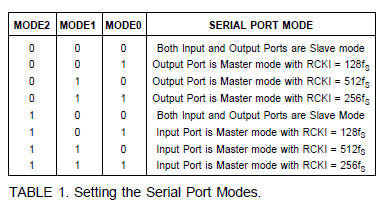Hi,
Could you please tell us the behavior of the bypass mode in detail for each setting of the serial port modes as below?
We believe that SRC4192 directly passes the input port data(BCKI, LRCKI and SDIN) to the output port data(BCKO, LRCKO and SDOUT) in the bypass mode regardless the setting of the serial port modes?
Could you please give us your advice if we have any misunderstanding?
Best regards,
Kato


